How to Use Positive Reinforcement in Cat Socialization
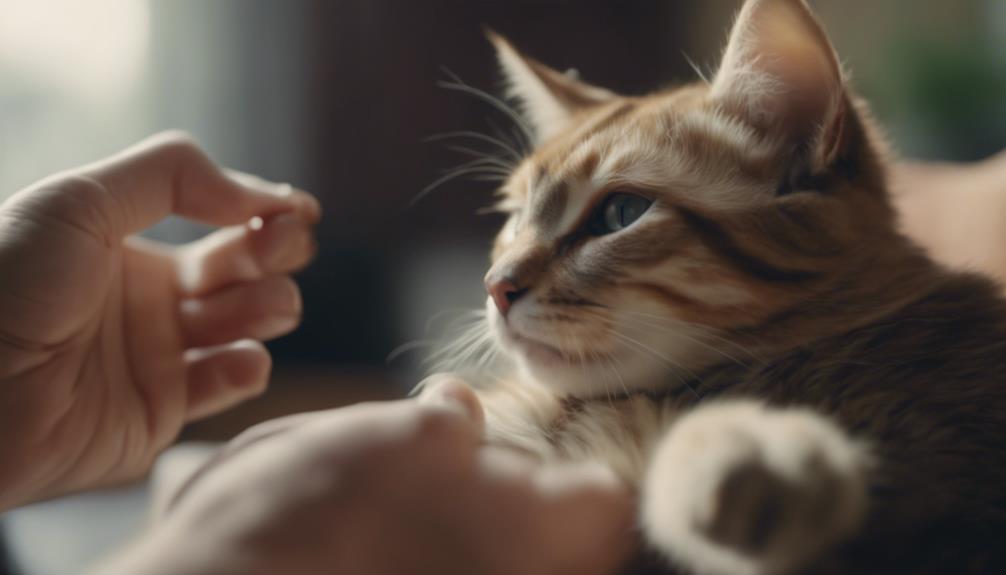
Positive reinforcement is a valuable tool for socializing cats. When introducing a new cat to a household, it is important to provide rewards such as treats, toys, or praise when the cats interact calmly and positively. This encourages them to associate each other's presence with good things, making it more likely for them to form a bond over time. Additionally, positive reinforcement can be used to reward desired behaviors such as using a scratching post instead of furniture or using a litter box consistently. By consistently rewarding positive behaviors, cats learn what is expected of them and are more likely to repeat these behaviors in the future.
In contrast, punishment or negative reinforcement can create stress and fear in cats, leading to aggressive or anxious behaviors. Instead of focusing on what not to do, positive reinforcement focuses on what cats should do, creating a more positive and effective learning environment. By using rewards to reinforce desired behaviors, cats can feel more confident and comfortable in their environment, leading to stronger social bonds and overall well-being.
Benefits of Positive Reinforcement
Positive reinforcement is a widely recognized and effective technique for encouraging desired behaviors in cats. Behavior modification and motivation techniques play a crucial role in shaping a cat's socialization process. By utilizing positive reinforcement, cat owners can effectively encourage desired behaviors, such as socializing with other animals or engaging in interactive play. This technique involves rewarding cats with treats, praise, or playtime when they exhibit the desired behavior, reinforcing the association between the behavior and the positive outcome.
Encouraging desired behaviors through positive reinforcement is based on the principles of operant conditioning, where cats learn to associate a specific behavior with a reward. This method not only helps in fostering positive behaviors but also strengthens the bond between the cat and its owner. By consistently rewarding desired behaviors, cats are more likely to repeat those actions, leading to a more socially adaptable and well-behaved pet. Overall, the benefits of positive reinforcement in cat socialization are vast, providing an effective and humane approach to shaping their behaviors.
Understanding Cat Behavior
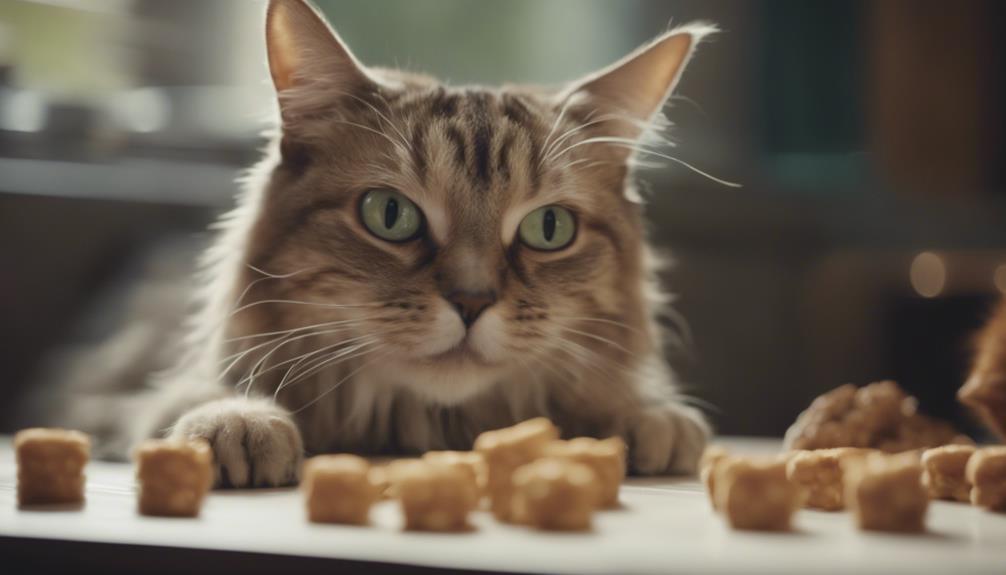
Understanding cat behavior is crucial for effective socialization. By interpreting cat body language, individuals can discern whether a cat is feeling comfortable or stressed.
Recognizing the difference between playful and aggressive behaviors can aid in creating positive interactions between cats and humans.
Cat Body Language
How can one decipher the subtle cues of a cat's body language to understand their behavior better?
Cats communicate a lot through their body language, offering valuable insights into their moods and intentions. To interpret signals effectively, it's essential to pay attention to details like tail movement, ear position, and overall posture.
Here are some key nonverbal cues to look out for:
- Tail Position: A raised tail indicates a happy or curious cat, while a lowered tail may signify fear or aggression.
- Ear Movements: Ears forward signal interest, while flattened ears could mean anger or discomfort.
- Purring and Meowing: Purring often indicates contentment, while excessive meowing might suggest stress or hunger.
- Body Posture: A relaxed, open posture suggests a comfortable cat, whereas a tense, hunched stance can indicate fear or aggression.
Playful Vs Aggressive
Deciphering between playful and aggressive behavior in cats requires keen observation and understanding of their body language cues. Playful interaction often involves relaxed body postures, gentle movements, and dilated pupils. Cats may engage in play by pouncing, chasing, or batting at toys.
On the other hand, aggressive behavior is characterized by tense body language, flattened ears, and hissing or growling sounds. If a cat's play escalates into aggression, it's crucial to redirect their focus onto appropriate toys or activities to prevent negative interactions. Building trust and encouraging playfulness through positive reinforcement techniques can help manage aggression effectively.
Socializing With Humans
To effectively socialize with cats, it's essential to recognize and respond to their unique behavioral cues when interacting with humans. Building trust and forming bonds are key elements in fostering a positive relationship with your feline companion.
Here are some tips for socializing with cats:
- Respect Personal Space: Allow the cat to approach you on their terms.
- Use Gentle Touch: Petting should be slow, gentle, and in areas where the cat enjoys being touched.
- Offer Treats: Use treats as positive reinforcement to associate your presence with something pleasant.
- Create a Safe Environment: Provide hiding spots and vertical space where the cat can retreat if feeling overwhelmed.
Setting Up a Positive Environment
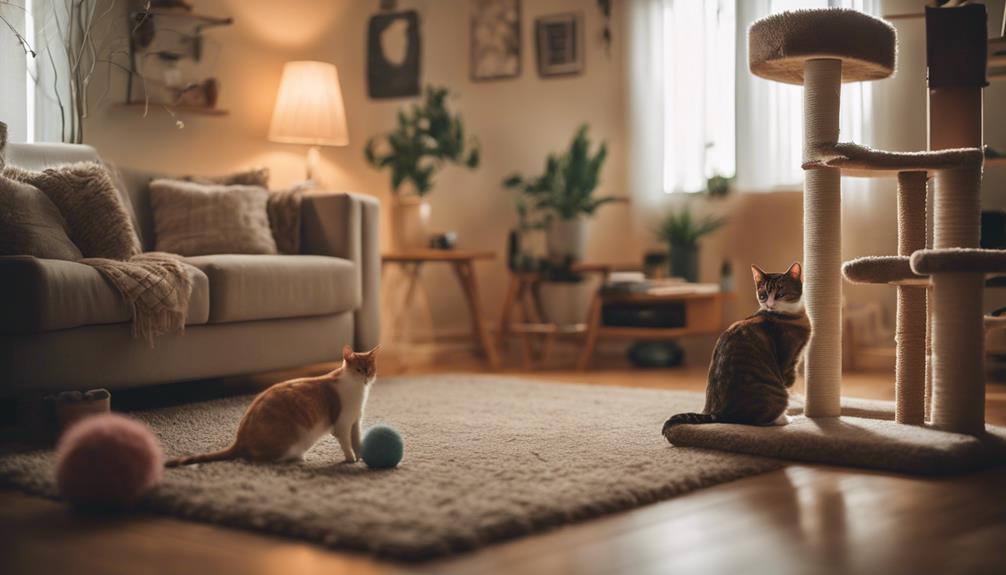
Creating a cat-friendly space entails strategically arranging furniture and providing hiding spots to foster a sense of security and comfort for your feline friend. Safe spaces are crucial for cats to feel secure and reduce stress levels. Ensure there are cozy nooks or cat trees where they can retreat when feeling overwhelmed. Positive interactions are more likely to occur when a cat feels safe and relaxed in its environment.
Trust building is essential in cat socialization, and the environment plays a significant role in this process. Gradual exposure to new stimuli in a controlled setting can help cats adjust and build trust. Introduce new elements slowly, allowing the cat to explore at its own pace. This approach can prevent overwhelming the cat and promote positive associations with the environment.
Moreover, consider providing elevated spaces like shelves or window perches, as cats feel more secure when they can observe their surroundings from a high vantage point. By creating a positive environment with safe spaces and gradual exposure, you set the stage for successful cat socialization.
Choosing the Right Rewards

To facilitate successful cat socialization, selecting the appropriate rewards is crucial in reinforcing positive behaviors and strengthening the bond between the cat and its caretaker. When choosing the right rewards, several factors need to be considered to ensure effective reinforcement and progress in training.
- Treat Selection: Opt for treats that are highly palatable to your cat and reserved specifically for training sessions. This helps maintain the treat's value and keeps the cat motivated.
- Training Progress: Evaluate the cat's response to different rewards and adjust accordingly based on the progress made. This can involve upgrading to more enticing treats for advanced training tasks.
- Motivation Levels: Consider the cat's individual preferences and motivation levels when selecting rewards. Tailoring the rewards to what the cat finds most rewarding can enhance training outcomes.
- Reinforcement Timing: Timing is crucial in reinforcement. Give the reward immediately after the desired behavior to strengthen the association between the action and the treat.
Implementing Training Techniques
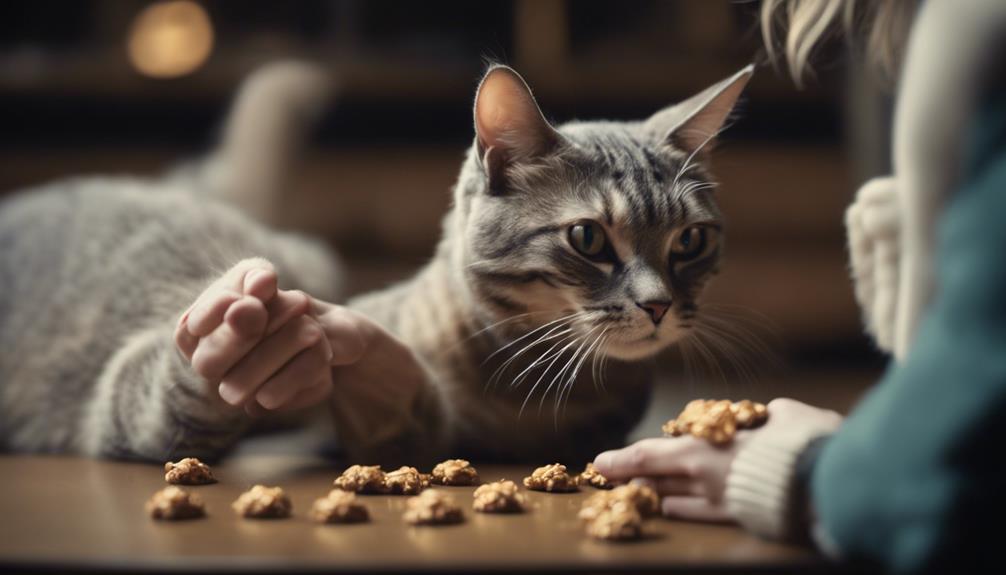
When training a cat using positive reinforcement, rewarding desired behaviors is essential for encouraging the repetition of those actions.
Consistency is key in reinforcing good behavior and helping the cat understand what's expected of them.
Patience and persistence are crucial during the training process, as cats may take time to learn and adapt to new behaviors.
Rewarding Desired Behaviors
Implementing positive reinforcement techniques involves consistently rewarding desired behaviors exhibited by your cat to encourage socialization and strengthen the human-feline bond.
When training your cat, consider using clicker training and treats to reinforce good behavior effectively.
Additionally, offering praise and playtime can further motivate your cat to engage in desired social behaviors.
By pairing these rewards with actions you want to encourage, you create a positive association that encourages your cat to continue exhibiting those behaviors.
Consistency Is Key
Building upon the foundation of rewarding desired behaviors, maintaining consistency in implementing training techniques is crucial for effectively socializing your cat and strengthening the human-feline bond.
Consistency in training means always responding to your cat's behaviors in the same way, whether it's through positive reinforcement or redirection. This predictability helps your cat understand what's expected of them, leading to more effective training outcomes.
By consistently rewarding desired behaviors and using the same cues for specific commands, you create a clear communication channel with your cat, facilitating behavior modification. This approach not only helps in shaping your cat's behavior but also fosters a trusting relationship between you and your feline companion.
Patience and Persistence
Maintaining a consistent approach to training techniques requires patience and persistence to effectively shape your cat's behavior and strengthen your bond with them. Building trust and achieving gradual progress are key elements in successfully socializing your feline companion. Here are some essential tips to help you navigate this process:
- Stay Calm and Positive: Cats can pick up on your emotions, so remaining calm and positive during training sessions will help create a safe and welcoming environment.
- Set Realistic Goals: Understand that building trust and modifying behavior takes time, so set achievable goals to celebrate small victories along the way.
- Be Consistent: Consistency in your training methods is crucial for your cat to understand what's expected of them.
- Reward Good Behavior: Positive reinforcement through treats, praise, or playtime will encourage your cat to repeat desired actions.
Overcoming Challenges
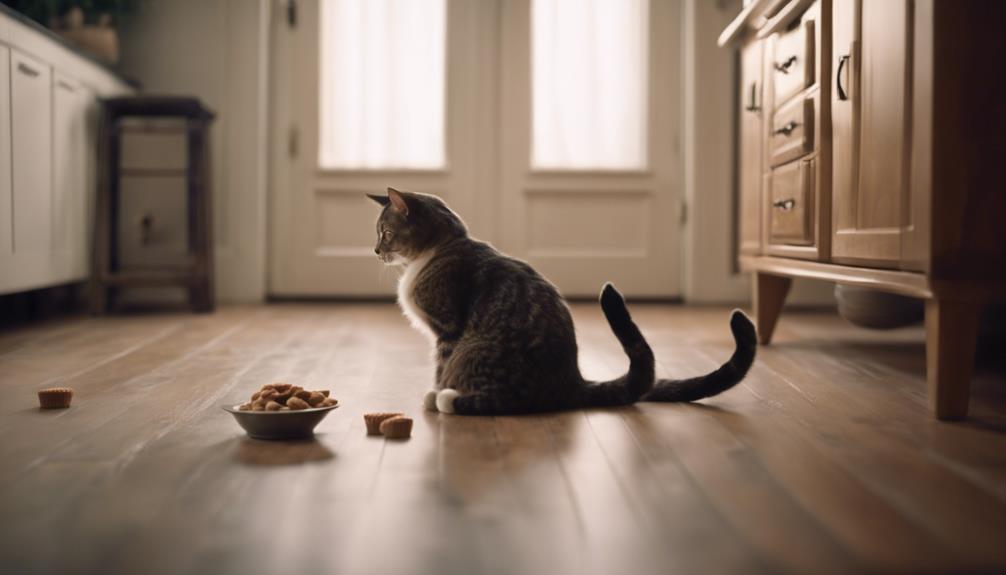
When faced with challenges in socializing a cat using positive reinforcement, understanding the cat's individual preferences and triggers is crucial. Trust building and bonding exercises play a significant role in overcoming these obstacles.
Cats, being sensitive animals, may have specific fears or past experiences that affect their behavior. To address these challenges, caregivers should focus on creating a safe and comfortable environment for the cat. Providing hiding spots, vertical spaces, and interactive toys can help reduce stress and build trust.
Bonding exercises, such as interactive play sessions and gentle petting, can strengthen the relationship between the cat and caregiver. It's essential to observe the cat's body language and responses during socialization attempts to adjust the approach accordingly.
Additionally, seeking guidance from a professional behaviorist or veterinarian can offer valuable insights and solutions tailored to the cat's individual needs. By approaching challenges with patience, empathy, and a willingness to adapt, caregivers can successfully socialize their cats using positive reinforcement techniques.
Consistency and Patience

Consistent application of positive reinforcement techniques is essential for successful cat socialization, requiring patience and dedication from caregivers. Consistent training helps cats understand what behaviors are desirable, creating a positive environment for socialization. Patience is key as cats may take time to adjust to new routines and behaviors. A positive attitude from the caregiver can significantly impact the cat's response to socialization efforts, fostering trust and cooperation. It's crucial to remain patient and optimistic even during challenging moments, as cats can pick up on the caregiver's emotions.
Key Points:
- Consistent training helps cats learn desirable behaviors.
- Patience is crucial for cats to adjust to new routines.
- A positive attitude from the caregiver fosters trust.
- Remaining patient and optimistic during challenges is essential for successful socialization efforts.
Frequently Asked Questions
Can Positive Reinforcement Be Used to Socialize Feral Cats?
Can positive reinforcement be used to socialize feral cats? Wildlife conservation efforts benefit from community support through positive reinforcement techniques. By rewarding desired behaviors, feral cats can be slowly socialized, fostering better relationships with humans and other animals.
How Can I Use Positive Reinforcement to Introduce a New Cat to My Existing Pets?
When introducing a new cat to existing pets, start by creating positive associations through playtime and treats. Encouraging bonding through shared activities like interactive toys can help foster a harmonious relationship between the animals.
Is It Possible to Use Positive Reinforcement to Address Aggression Issues in Cats?
When addressing aggression issues in cats, positive reinforcement can be effective for behavior modification and aggression management. Rewarding desired behaviors with treats or playtime can help redirect negative behaviors and promote a positive environment.
What Are Some Common Mistakes to Avoid When Using Positive Reinforcement in Cat Socialization?
When working on cat socialization, it's crucial to avoid punishment and focus on building trust. This approach fosters positive interactions and strengthens the bond between cats and their owners, creating a harmonious and enriching environment for all involved.
Are There Any Specific Training Tools or Products That Can Enhance the Effectiveness of Positive Reinforcement in Cat Training?
Training tools like clickers and treat dispensers can enhance positive reinforcement in cat training. Clicker training helps mark desired behaviors, while treat dispensers provide instant rewards. These tools create clear associations between actions and rewards, improving training effectiveness.











